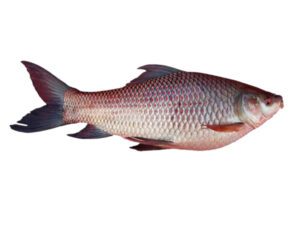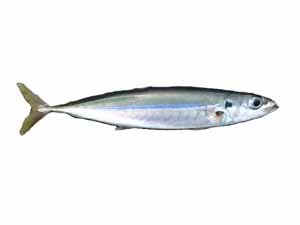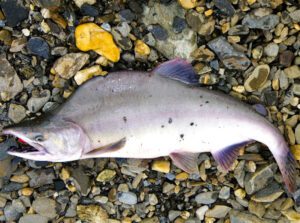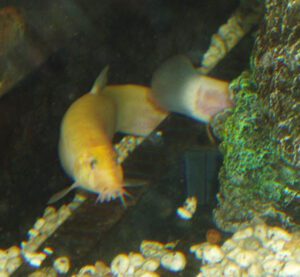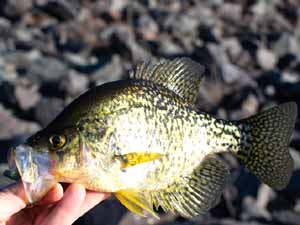Pacu fish is a freshwater fish species found in many countries around the world. Pacu is actually a common name used to refer to several species of omnivorous South American freshwater serrasalmid fish related to piranhas. Although, Pacu and piranha do not have similar teeth.
The main difference between Pacu and piranha is jaw alignment. Piranha have pointed, razor-sharp teeth in a pronounced underbite. Whereas the Pacu fish have squarer, straighter teeth and a less severe underbite, or a slight overbite.
Unlike piranha, Pacu fish mainly feed on plant material and not flesh or scales. And the Pacu can reach much larger size than piranha. However, read more information about this fish species below.
Characteristics
Like all other fish species, the Pacu fish also have several distinct physical characteristics. They have a deep, laterally compressed body. They are typically wider than they are tall. They have molarlike teeth which resemble human teeth. Their teeth are flat, broad, and square. And their teeth are adapted for grinding plant material like fruits, nuts, and seeds.
In terms of coloration, the Pacu fish usually have a dark silver or grayish body with hints of green or blue. Some species may display a more reddish or golden hue (especially when younger). These fish often have a shiny, almost metallic sheen to their scales. And this feature make them visually striking.
Their fins are generally large and rounded, with the dorsal fin positioned slightly behind the midpoint of their body. Their tail fin is forked, and the pectoral fins are located near the head. While their pelvic fins are closer to the center of the body.
Scales of the Pacu fish are smooth and have a glossy appearance and their scales are fairly large. They have relatively large eyes in proportion to their heads.

Size and weight
Exact size of the Pacu fish depends on the species. Some species can grow quite large. For example, the Black Pacu can reach up to 3 feet long and weigh upto 25 kg or even more in the wild. And average length of the smaller fish is typically about 1-2 feet.
Habitat
The Pacu fish are native to tropical and subtropical South America. They inhabit rivers, lakes, floodplains, and flooded forests in the Amazon, Orinoco, São Francisco River and Río de la Plata Basins, as well as rivers in the Guianas. Here they form part of the highly diverse Neotropical fish fauna. Although, their habitat preferences varies significantly depending on the exact species. Some of the Pacu species are migratory.
Diet
The diet of Pacu fish is different from their piranha relatives. Pacus are primarily herbivorous, but the piranhas are primarily carnivorous. Although, some Pacu species can be omnivorous and eat small animals occasionally. In the wild, their natural diet includes fruits, seeds, nuts, leaves, fish eggs, small invertebrates, and different aquatic plants. But in captivity, they are mainly fed on vegetables, fruits, commercial pellets, algae, plant matter, nuts and seeds, protein etc.
Behavior
The Pacu fish are generally peaceful and non-aggressive (especially compared to their piranha relatives. Although, their behavior can vary based on many factors such as species, environment etc.
Uses
Pacu fish are mainly used as food. They are commonly consumed in South America. They are also used in aquaculture and fish farming.
Taste
The taste of Pacu fish is often as mild, delicate, and slightly sweet. The taste is almost similar to other freshwater fish like tilapia or bass.

Price
Exact price of Pacu fish depends on numerous factors and can vary from place to place. You can expect the price around $10 per pound in the American market.
Frequently asked questions (FAQs)
People often ask several questions regarding this fish species. Here we are trying to list the most common and frequently asked questions about Pacu fish and trying to answer them. Hope this questions and answers will help you. Don’t hesitate to ask if you have more questions.
What is a Pacu fish?
A Pacu is a large, herbivorous fish species which is related to piranha. They belong to the family Serrasalmidae. They are less aggressive, and they have flat, molar-like teeth designed for grinding plant material like nuts, fruits, and seeds.
Where do Pacu fish live?
The Pacu fish are native to the rivers of South America (particularly in the Amazon and Orinoco river basins). They are found in many countries including Brazil, Colombia, Venezuela, and Peru.
Can you eat Pacu fish?
Yes, you can eat this fish. Pacus are edible and are commonly consumed in South America. Pacus have white, firm flesh, very similar to tilapia. You can enjoy this fish in many different ways including grilling, frying, smoking etc.
Are Pacu fish aggressive?
No, Pacus are generally not aggressive. They are peaceful and non-aggressive fish species. They are not known for attacking other fish like piranhas do. Although, sometimes they can be territorial in smaller spaces, especially as they grow larger.
Are Pacu fish dangerous?
No, the Pacus are not inherently dangerous to humans.
How big do Pacu fish get?
Depends on the species. They can grow large in most cases, with some species reaching up to 3 feet in length and over 25 kg. But most of the Pacus kept in aquariums tend to grow smaller, and typically reaching around 12 to 24 inches.
How long do Pacu fish live?
Pacu fish can live for a long time. Average lifespan of these fish is typically between 15 to 20 years. Although, some fish can live even longer in the wild. Although their environment, diet and some other factors influence their lifespan.

